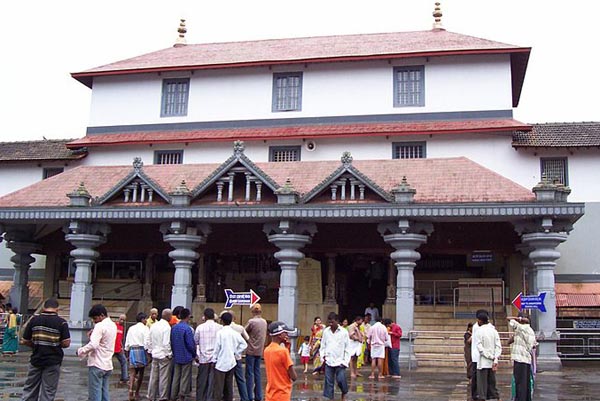Shri Dharmasthala Manjunatheshwara Temple

Information of Shri Dharmasthala Manjunatheshwara Temple, Kadri, Mangalore, Karnataka
Shri Manjunatheshwara Temple located at Kadri is an ancient Hindu temple. It's now 1046 years old and a very important temple of Lord Shiva in Mangalore of Dakshina Kannada district of Karnataka state. The Lord Shiva is called as Manjunatha in this temple since it's belong to Shiva pattern as per the Puranas. It has a long standing history from the 10th century AD by the emergence of the Buddhist religion in these regions. The Vishnaviks sect in Hindu religion adore this temple a lot and visit here on all important dates related to the Shiva ideology. This is also a pilgrim center for all Hindu belief. Poojas are performed here on daily basis and these are mostly taken part by its local peoples. It is located in a vast pastor land of Kadri foot hills. This temple can be reached from Kadri town in Mangalore District of Karnataka State in India.
Shri Dharmasthala Manjunatheshwara Temple Religious Significance
Most of its devotees come here to take a dip in the holly pond near this temple. It is a nine set of pond having a special ritual significance. Nearby it, there is a natural spring, it is equivalent to Ganga River as per few mythological believes. It is said in the olden days, that those who are not able to reach the Ganges for a holy dip can come and full fill here in this Manjunatheshwara Temple. The Janmashtami is celebrated here very grandly. Many of its devotees take part in this special pooja taken place here. The Shivarathri day attracts many pilgrims here. It is a belief to Hindus, by to be awake throughout this night and apace lord Shiva's. There are many pilgrims who visit this temple annually as a must to seek blessing from this god. The Shivaivik sect of Hindus regularly visit here on all important days related to Lord Shiva's and his forms. This temple is also having a Math for its pilgrims to take rest here.
Shri Dharmasthala Manjunatheshwara Temple Mythology & History
In the 10th century AD the base village of Kadri hills were occupied by many Buddhist monks. They also placed a Bodhisatva statue and prayed this god. But Buddhism was declining in India due to various economical and social reasons. In the same period, the ruler of Kadri known as Kundavarma Bupendra placed a Lokeshwara idol and started praying it. Slowly its tribal and local peoples worshiped here on daily basis and this became a Hindu temple thereafter. This temple was later developed in many stages and became an important Shiva temple in Mangalore. There is also another story behind this creation of this temple. As per the Bharadwaja Samhita records, there were many saints come here for meditation and Lord Shiva is a Yogic personality. Hence, many of the sages came to a conclusion to devote a temple for Lord Shiva as Manjunatha here as per the Parashuram incidence happened in these Shyadri Mountain Ranges. This is also happened in the same time when the Buddhism was disappearing from this region.
Shri Dharmasthala Manjunatheshwara Temple Architectural Significance
Shri Manjunatheshwara Temple is constructed by following the Agama Shastra principals. This is a special form of architecture followed in the Dravidian temple constructions. This temple is built of laterite stone, granites stone and woods. It is looking in a square pattern. There are 9 manmade ponds dug here. It is found near by a natural spring on the adjacent side of this temple. Its main deity is made out of special mix of metals known as the Pancha Lohas. This temple has beautiful carving works on the woods and the stone. A big pole is kept here for temple flag hoisting. This temple structure is mainly found with lot of pediments.
- Andhra Pradesh Temples
- Assam Temples
- Bihar Temples
- New Delhi Temples
- Goa Temples
- Gujarat Temples
- Jammu and Kashmir Temples
- Karnataka Temples
- Kerala Temples
- Madhya Pradesh Temples
- Maharashtra Temples
- Odisha Temples
- Punjab Temples
- Rajasthan Temples
- Sikkim Temples
- Tamil Nadu Temples
- Telangana Temples
- Uttar Pradesh Temples
- Uttarakhand Temples
- West Bengal Temples